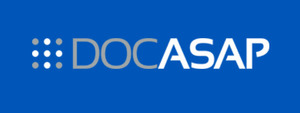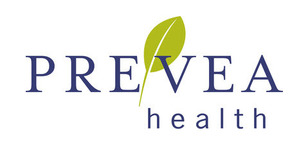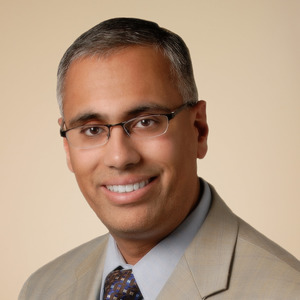Online Scheduling Solution Streamlines Access at Prevea Health
// By Jane Weber Brubaker //

Online scheduling is something we take for granted when it comes to making a dinner reservation or booking a flight. But it’s been a tough nut to crack for healthcare systems, and a source of frustration for patients when it’s not available. It seems like it should be easy. In reality, it’s complex.
Upstream from online scheduling functionality are a host of considerations, centered on giving patients access to the right provider at the right time at the right location in the right care setting. “Scheduling is the last mile of that access problem,” says Puneet Maheshwari, chief executive officer of DocASAP.
 Prevea Health in Green Bay, Wisconsin launched DocASAP’s solution in March. The technology addresses many of the multispecialty group’s unique needs. “The majority, if not all the tools that we found in the market were very cookie-cutter—where, how many, and what time?” says Ashok Rai, MD, Prevea’s president and chief executive officer. “But in healthcare, there is also the what—what services are needed? What problems do you have?”
Prevea Health in Green Bay, Wisconsin launched DocASAP’s solution in March. The technology addresses many of the multispecialty group’s unique needs. “The majority, if not all the tools that we found in the market were very cookie-cutter—where, how many, and what time?” says Ashok Rai, MD, Prevea’s president and chief executive officer. “But in healthcare, there is also the what—what services are needed? What problems do you have?”

The complexity doesn’t stop there. What pathways do consumers take to find a doctor? Which type of provider is the best choice for them? Do they need an office visit? An urgent care clinic? A trip to the ED? On the physician side, does improving access mean providers have to give up control of their schedules? What happens if patients schedule an appointment with the wrong provider—an orthopedist, for example, when they really needed a pain specialist?
The better a health system is at helping patients navigate these complexities, the greater the opportunity for increasing market share. Has your health system built an easy on-ramp for patients? Continue reading to learn why Prevea Health is so optimistic about the future.
Last Bastion of Control

Ashok Rai, MD, president and chief executive officer, Prevea Health
One of the challenges of access is opening up a provider’s scheduling template for patients to make appointments without forcing the provider to change his or her work habits. “So little of what we do these days is under our control that our template is kind of sacred, for lack of a better word,” says Rai. “It’s the one thing that you still control in your life.”
The benefit of the new scheduling software from the physician perspective is that it is highly configurable. “You will hear things like, ‘I don’t see two new patients back to back, or I only see chronic patients during these days. If it’s an acute situation, allow for double booking and we’ll accommodate,’” says Maheshwari. “Taking both the clinical and the operational intake protocols and converting them into a user experience that consumers can navigate themselves has been one of the core areas where we have doubled down.”
Rai plans to make the templates available internally to Prevea’s call centers. “All the templates are loaded and it makes the concept of centralized call centers appealing because it’s more efficient than what we have today,” he says.
Push and Pull Capabilities
The technology allows Prevea to both pull patients in and push appointments out. “Some electronic partners work on the push mentality of pushing to the patient, and the others are on the pull, waiting for the patient to interact with us and then pulling them in,” says Rai. “We get both concepts with DocASAP, especially on the volume side, it’s pulling them in, they’re getting appointments.”

Puneet Maheshwari, chief executive officer of DocASAP
Patients are pulled in through any online channel they may be searching in. “We take this capability to whatever pathways the consumer is using,” says Maheshwari. “If you go to Google searching for a provider, we can embed it right within Google My Business pages.” Similarly, the functionality can be embedded in a provider’s web and mobile properties and call center environment, as well as in a health insurance company’s doctor finder application, call center, and CRM solution.
Rai plans to use the push capability to take full advantage of Medicare Advantage contracts. “One of the key things in Medicare Advantage is making sure we’re seeing the patients annually,” he says. “The ability to not only pull the patient in when they want an appointment but to push the appointment out to them when we know they need the appointment is the advantage of the partnership we have with DocASAP.”
Refining the Search Process
How do consumers find the right doctor for their particular need? As in our earlier example (pain specialist or orthopedist?), patients may not know what type of doctor is most appropriate. DocASAP’s “predictive intelligent matching” capability enables consumers to refine their searches with tools such as chatbots, voice-based interaction, or dropdown lists; natural language processing is on DocASAP’s roadmap for deployment in the near future. For existing patients, the functionality is integrated with Epic. DocASAP is an Epic-certified scheduling solution, one of Epic App Orchard’s available APIs.
A consumer may search for a physician by name because a friend or family member recommended them. “Based on the intake protocol of Prevea, we are asking a set of questions to then say yes, this is the right doctor for you and here are the times, or saying no, this doctor is not the right doctor for you, but here are the three doctors within the same practice that you can see within the next week,” says Maheshwari. Rai notes, “The last thing we want to do is appoint a patient to a slot that isn’t the right slot, both for the provider and more importantly the patient. We don’t want to create frustration.”
Other considerations for patients include finding the right type of provider and care setting. DocASAP matches consumers based on the provider’s care delivery models. “A patient would say, ‘Should I go to an MD or can I go to an NP? Should I go to an urgent care setting, or can I get it done through a telemedicine visit?’” Maheshwari says. “Understanding the most appropriate care delivery model, and navigating the consumer to that model, is wonderful in terms of simplifying access to care.”
Phased Approach
Prevea plans to roll out the solution in phases. “We are literally turning this on where it makes sense, and not turning it on where it doesn’t make sense,” says Rai. “In primary care, it makes a lot of sense.” He allows that some specialties may be too complex to allow consumers to self-schedule. “But for almost every speciality,” he notes, “there is a certain select template category for somebody calling in without that direct PCP calling for you.”
Prevea is optimistic about how this technology will streamline access and reduce friction for consumers when it comes to finding care. “Our goals in terms of technology are to make sure we’re accessing our patients, and our patients are accessing us, on their terms, whether it be an asynchronous visit, online scheduling, receipt of labs, or synchronous video,” says Rai. “No longer is the hallmark of healthcare that you come to our building. As Wayne Gretzky said, we need to skate to where the puck is going, not to where it’s been.”
Jane Weber Brubaker is executive editor of Plain-English Health Care, a division of Plain-English Media. She directs editorial content for eHealthcare Strategy & Trends and Strategic Health Care Marketing, and is past chair of the eHealthcare Leadership Awards. Email her at jane@plainenglishmedia.com.

